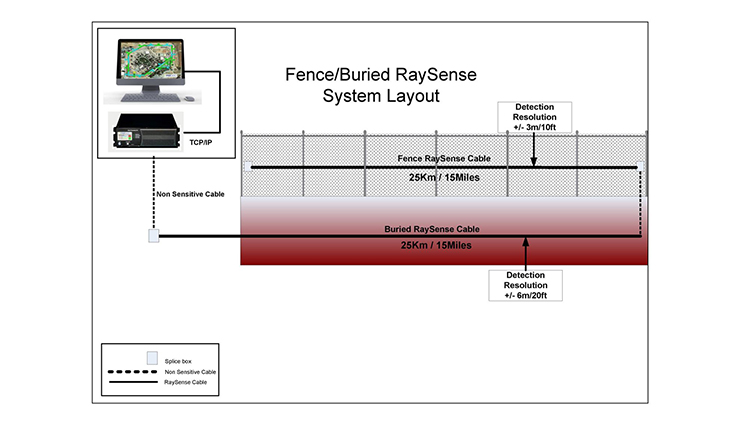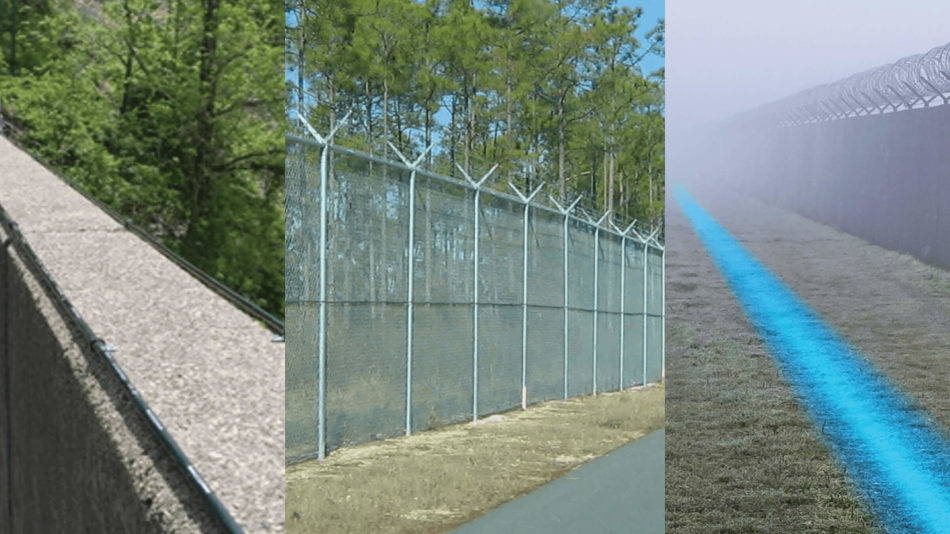The Role of Fiber Security in Boosting Your Cyber and Physical Security Network
The Role of Fiber Security in Boosting Your Cyber and Physical Security Network
Blog Article
Why Fiber Optic Protection Equipments Are the Future of Security
The transition to fiber optic security systems notes a considerable improvement in the realm of security, driven by their outstanding data transmission capacities and resilience to outside interferences. These systems not only facilitate faster and a lot more dependable interaction but likewise offer an affordable solution with decreased upkeep needs. As the landscape of safety advances alongside arising modern technologies such as AI and IoT, the capacity for optical fiber to boost and redefine safety and security facilities ends up being increasingly evident. The ramifications of these innovations raise crucial concerns regarding the future of protection actions and their effectiveness in an ever-changing environment.
Advantages of Fiber Optic Systems
One of the primary advantages of fiber optic systems is their superior bandwidth ability, which promotes the transmission of huge quantities of information over cross countries without substantial loss. This particular is specifically beneficial for security applications that require the constant surveillance and transfer of high-def video feeds, sensor information, and various other crucial info. Fiber optics can suit the expanding demands of modern-day safety systems, guaranteeing that data continues to be intact and dependable.
Additionally, fiber optic wires are less susceptible to electro-magnetic interference, which can be a considerable concern in atmospheres with various digital devices. This resistance enhances the honesty of the data being transmitted, therefore lessening the risk of information breaches or system failings. Fiber optic systems are inherently more safe than typical copper wires, as tapping into a fiber optic line without detection is exceptionally challenging.
The longevity of fiber optic wires likewise adds to their appeal. They are immune to environmental elements such as dampness and temperature changes, lowering maintenance expenses and boosting system long life. In general, these benefits placement fiber optic systems as a durable and efficient option for modern-day safety and security facilities, ensuring reputable and safe and secure data transmission.
Enhanced Data Transmission Rate

The capability to transfer substantial amounts of data swiftly promotes the seamless combination of high-def video clip feeds and progressed analytics. Protection systems can now process and evaluate info in real-time, enhancing feedback times and situational recognition. Additionally, fiber optic links sustain longer transmission ranges without destruction of signal quality, making them perfect for extensive safety networks.
The boosted rate of fiber optic systems not just boosts the performance of protection procedures yet additionally lowers latency. This is especially crucial in essential situations where timely decision-making can stop safety violations or mitigate possible threats. As organizations proceed to focus on safety and security and effectiveness, the need for quick and reliable data transmission will certainly solidify fiber optic systems as a keystone of read the full info here modern-day safety infrastructure.
Resistance to Interference
Fiber optic protection systems constantly demonstrate remarkable resistance to electromagnetic disturbance, an essential advantage in environments vulnerable to electronic sound. Unlike standard copper cable televisions, which can be adversely impacted by magnetic fields, superhigh frequency disturbance, and various other forms of electric disturbance, fiber optic wires use light to transmit data. This inherent home ensures that the signals stay clear and unaltered, despite surrounding electronic activity.
The usage of glass or plastic fibers in fiber optic innovation creates an obstacle against interference, permitting trusted data transmission also in challenging circumstances such as industrial centers, urban areas with high digital traffic, or places near radio towers. This particular considerably minimizes the likelihood of signal deterioration or loss, making fiber optic systems specifically suitable for safety applications where honesty and accuracy of data are vital.
Moreover, this resistance to interference improves the total efficiency and reliability of safety and security systems, guaranteeing that surveillance and alert systems function perfectly. In a globe where protection is significantly threatened by sophisticated innovations, the durability of fiber optic systems attracts attention as a crucial feature, reinforcing their status as a necessary part of modern-day safety and security facilities.
Cost-Effectiveness Gradually
Substantial price financial savings can be attained in time with the application of fiber optic safety systems. While the preliminary financial investment may seem higher compared to traditional copper-based systems, the long-term financial advantages emerge via minimized functional and maintenance costs (fiber security). Fiber optic cables are inherently extra sturdy and much less prone to environmental elements, which translates to decrease substitute and repair service costs over their lifespan
Furthermore, fiber optic systems call for less power to run, which even more lowers energy prices. Improved information transmission capabilities enable fewer repeaters and amplifiers, decreasing devices investment and simplifying setup procedures. The scalability of these systems also adds to cost-effectiveness, as organizations can increase their safety facilities without sustaining considerable added expenses.
One more aspect to take into consideration is the increased effectiveness in surveillance and response capabilities that fiber optics give. Enhanced real-time data transmission can cause quicker case response useful link times, potentially mitigating losses and obligations related to security breaches. In sum, the long-lasting benefits of fiber optic protection systems not just warrant the initial expenditure but likewise position them as an economically sensible selection for companies looking for durable defense solutions.

Future Advancements in Protection
Advancing innovations are readied to change safety and security systems, integrating fabricated intelligence (AI) and artificial intelligence to boost threat detection and reaction capacities. These innovations will permit safety and security systems to examine substantial quantities of information in real-time, identifying patterns and anomalies that indicate potential risks. This positive technique will certainly make it possible for much faster decision-making and extra reliable i loved this incident responses.
Additionally, the incorporation of the Internet of Things (IoT) is paving the way for interconnected security devices, offering comprehensive surveillance and monitoring. Smart sensors can relay details concerning ecological adjustments, while automated signals can inform safety workers promptly of questionable activities.
Additionally, the development of biometric innovations will further bolster security devices. Face recognition, fingerprint scanning, and retina identification are becoming more sophisticated, offering layers of authentication that are difficult to bypass.
Conclusion
Finally, fiber optic safety systems stand for a considerable development in security technology, offering unparalleled information transmission speed, resistance to electro-magnetic interference, and long-term cost-effectiveness. As the need for sophisticated protection options continues to expand, the integration of optical fiber with emerging modern technologies such as AI, IoT, and biometrics will further boost safety and security frameworks (fiber security). The combination of these technologies will ensure a much more secure and receptive setting, solidifying optical fiber as a foundation of future security systems
Report this page